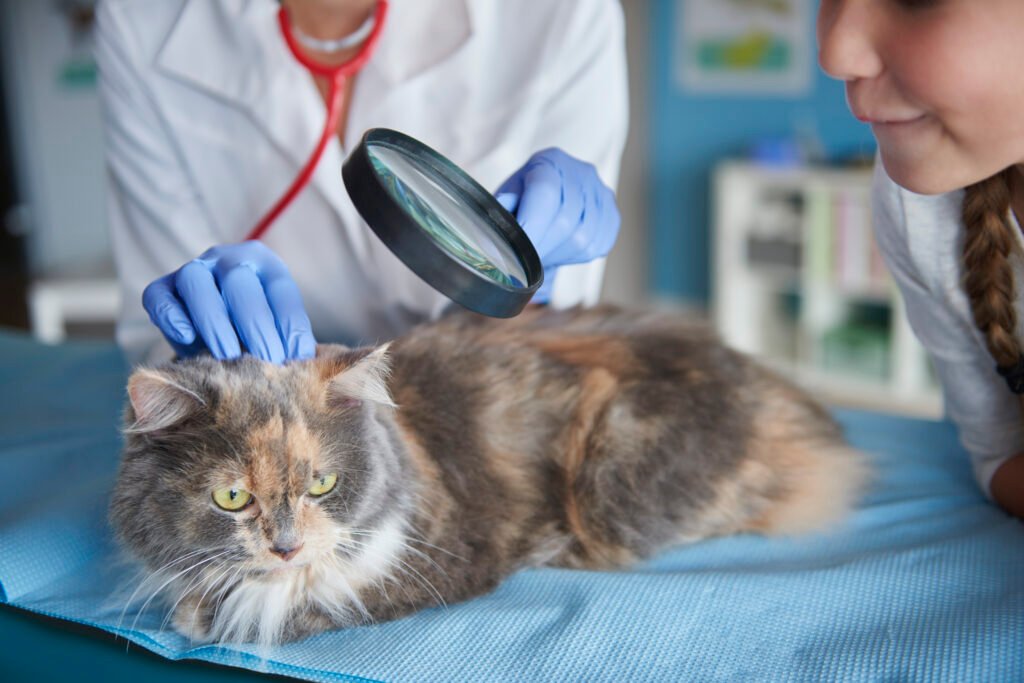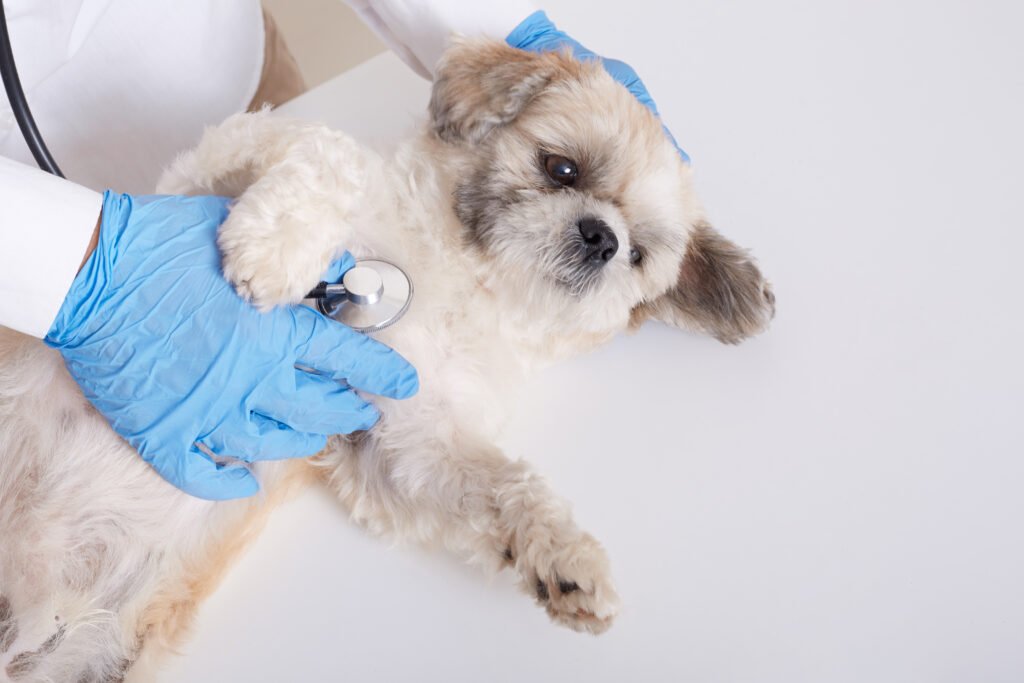When will I know my pet has a food allergy or sensitivity?
Diagnosing food intolerances or allergies in animals is crucial to their welfare as well as well-being. Some of the signs that suggest a response to a food might be itching, vomiting, diarrhea, or the condition of the coat may also change. These are signs that if diagnosed at the right time will not only save your pet from chronic complications but also significantly enhance his/her living standards.
Since food allergies manifest through digestive tract symptoms, their impact can be felt at all times and can only become worse with time if not well dealt with. Well done, it is possible to trace and exclude some products, which cause such reactions, and not to worsen health and experience more severe problems. This involves consulting a vet for an extensive review of your pet to enhance an accurate diagnosis and an appropriate management plan that includes the recommended dietary change, including an allergy test for cats.
If necessary, managing the food allergies or sensitivities will improve the pet’s health and at the same time achieve a good quality of life that will be beneficial for the owner and the pet.

"Symptoms That My Pet Is Experiencing: Allergy Test for Cats"
To determine if your pet might have food allergies or sensitivities, observe the following symptoms: To determine if your pet might have food allergies or sensitivities, observe the following symptoms:
Itching and Scratching: Some of the symptoms of food allergies include excessive scratchiness or scratching which can be around the ears, paws and/or abdomen. Redness, inflamed skin, or hair loss from the scratched area is also possible to observe.
Ear Infections: Otitis media recurrent can be associated with SEE through possible food allergies. The signs of this condition are ear itch or pain, foul smell, and a watery or thick, colored and smelly pus. Your pet may develop ear infections and might be constantly shaking their heads or when in contact with objects, they bang their ears.
Vomiting: Vomiting that becomes frequent could be a sign that one is allergic to certain foods. If your pet has just eaten and has thrown up or looks uncomfortable, then the problem might be caused by some of the ingredients of the pet food.
Diarrhea: A few of the symptoms include frequent vomiting, and diarrhea or conditions whereby your bowel movements become loose are signs of food intolerance. Putting emphasis to the tone and frequency of the pet’s bowel movements, it is also important to observe if the diarrhea happens after feeding the pet new food or treats.
Changes in Coat Condition: Poor diet is one of the causes of dull, dry, and flaky skin owing to food allergies. The coat may become dull, begin to over shed or have patches of missing hair.
Behavioral Changes: Pets could become more cranky or sleepy mainly due to pain from food allergy. Abnormal behaviors are also possible by which animals become less playful or become more restless possibly because of their sensitivities to foods.
Swelling: Allergic reactions which may manifest as enlarged face, paws or the rest of the extremities should be immediately reported. This is rarer but can be life threatening and needs to be reported to the veterinarian without delay.
Gastrointestinal Issues: Other signs and symptoms such as gas production, and bloating or changes in the appetite can also be manifestations of a food sensitivity. These disorders may be influencing your pet compared to its comfort and the entire health condition.
If these signs are kept track of and one knows when they usually occur, then they may be able to tell if it is due to a food allergy or sensitivity. If you see any of these signs in your dog, take your dog to a vet for check-up and proper identification of the problem.

Symptom Onset
One quick way to determine whether or not your animal is suffering from food allergies and sensitivities is the timeline in which symptoms appeared: a change in their diet; environment; routine. The timing of symptom onset after eating certain meals can also be helpful in identifying triggers. But if it happens on a regular basis with the timeline showing a consistent pattern, maybe a vet visit for further investigation may be needed. An allergy test for cats will indicate whether or not particular foods are the cause of your feline’s health issues and thus, you then would be able to adjust her diet accordingly for a healthier pet.
Correlation with Diet Changes: Determine if the signs developed after the introduction of a specific food or treat. That is why food allergies may appear after a certain food is introduced into their diet. If this shows correlation to its particular symptoms, this might be a good possibility that this is the cause.
Recent Dietary Additions: The importance should be given to the period around which the changes in the brands, types and flavors of the foods offered have occurred. If these changes are done and the symptoms appear soon after the changes, then the individual may be allergic to the ingredient which has been altered.
Consistent Symptom Onset: In this case it is important to establish if the symptoms are always experienced after each meal or after certain foods. Sensitivity takes time to manifest since the person’s symptoms take some time before they appear, unlike allergic reactions, which are immediate.
Seasonal or Environmental Factors: At times the symptoms are more or less similar to the pollen allergies that are seasonal or other environmental allergies. Determine if the onset of the symptoms was close to a time when the changes in the environment, like acquiring new plants at the home or transforming the environment occurred.
Historical Patterns: Check with your pet’s health history if there were any similar manifestations in the past. In case the symptoms appear frequently and are linked to specific food products it will be possible to talk about food allergy for sensitivity.
Veterinary Consultations: However, in case there was no correlation between onset of symptoms and diet changes, one should consult the veterinarian. They can indicate whether or not this onset has anything to do with food or whether it is a different health condition altogether.
Duration and Persistence: Take a look at the duration of the symptoms . Symptoms that occur over the several weeks or months could be indicative of a chronic condition in relation to food whereas temporary problems could be attributed to specific and short-term causes.
Recording the onset of symptoms and under what circumstance they occur is useful in determining whether the symptoms are as a result of food allergies or other illnesses. It is vital for your vet to know to make the right diagnosis and or come up with the right treatment plan.

New Food or Treats Added Since the Last Meal
To determine if recently introduced foods or treats might be causing your pet’s symptoms, follow these steps:To determine if recently introduced foods or treats might be causing your pet’s symptoms, follow these steps:
List New Items: Check if there was any new food, treat or any dietary supplement that was introduced to the pet in the last few weeks or months. All modifications of the brand, taste, or something of this sort of the food product are to be inserted.
Check Timing: Is there a recent change that can be associated with the start of your pet’s symptoms? Have you introduced new items in the house? Signs which developed soon after feeding your dog a new food or treat could be a pointer that the new addition is the cause.
Eliminate New Items: If you have recently brought in a number of new foods or treats to the pets, it will be possible to rule out every one of these causes successively. It is advised to observe your pet’s condition whether the symptoms alleviate, which can be an indication of the offending item.
Review Ingredients: The allergens may be present in the manufacturing ingredients of the new foods or treats to be given to the pet. Some of them are proteins such as beef or chicken, cereals such as wheat or corn, artificial flavors and preservatives.
Observe Portion Sizes: The modification of portion sizes or the frequency of feeds must also be observed when introducing the new items. Now and then people get stomach problems, or they have specific food intolerances, which may respond to large portions of new food.
Consult with the Vet: If you are not sure which of the new products can cause the observed symptoms, tell the veterinarian a list of the changes. They can assist with determining the possibility of the association and suggest the given strategy to follow.
Consider Treats and Table Scraps: Do not ignore foods or other forms of diet ingested outside meals; candies, biscuits, table scraps for pets and the young. These ones can also cause allergy or sensitivity if they have new or ingredients not previously used.
With this in mind, monitoring and analyzing any recent alterations in your pet’s diet, changes in treats should also be expected to point out if certain food causes the symptoms in your pet. In this way, the true causes of your pet’s food allergies or sensitivities can be determined, and the needed adjustment to his diet can be made.

Previous Food Allergies or Sensitivities in My Pet
To determine if your pet has a history of food allergies or sensitivities, follow these steps: To determine if your pet has a history of food allergies or sensitivities, follow these steps:
Review Medical Records: Review the pet’s previous records to see if there are any records of any previous illnesses or treatments you had done regarding food allergy or sensitivity. Such records may contain information about previous incidences or the patient’s reaction to some foods.
Recall Previous Symptoms: Consider if there have been other symptoms as observed currently in the past. If your pet has conditions such as itching, vomiting, diarrhea or ear infections, the problems you previously experienced could be due to food allergies or sensitivity.
Identify Previous Triggers: Also, indicate if your pet had shown previous symptoms reflecting certain foods or ingredients. It can give an indication of what may still be in circulation and what may be triggers for an allergic reaction.
Consult with Your Veterinarian: If you are not clear on your pet’s past, you should consult your veterinarian, they are here to help. They can advise based on your notes and the history of your pet’s health, whether previous signs were the outcome of eating certain food items.
Consider Previous Treatments: The specific procedures or changes of food plans done due to past signs should be considered. For instance, if the vet suggested that you should give your pet a special diet or hypoallergenic food in the past then this could be an indication of a past or present problem with food.
Ask Previous Caregivers: If you have newly acquired the pet or have recently changed caregivers for your pet, ask about the past routine medical check up of the pet. Experienced previous owners or caregivers may know some previous diseases that your dog may have been suffering from or the diet they fed the dog on.
Monitor for Recurrence: What they eat ‘actually has an impact on the symptoms, having them reappear when trying to eat foods that previously caused problems or when improving when altering their diet.’ The repeated occurrence suggests the tendencies of earlier allergies or sensitivity to certain kinds of foods.
Compiling and assessing this data will help if your pet has a record or past episodes of food sensitivity so as to diagnose your pet’s current condition.

Vet Visits for Pet Symptoms and Health Concerns
To determine if you’ve consulted with a veterinarian about your pet’s symptoms, consider these steps: To determine if you’ve consulted with a veterinarian about your pet’s symptoms, consider these steps:
Review Vet Visits: Look for any entries in your file for the last visits to the vet. Check for any encounters in which issues associated with food allergies or intolerances were talked of or examined.
Consultation Details: Are there any consulted vets to be remembered as far as details are concerned? Was your pet checked for food allergies/sensitivities by the vet, or was a possibility of dietary causes mentioned?
Treatment Plans: Going through the prescriptions of a veterinarian requires clients to go through the recommendations made by the vet. Some of these could be modifications in the diet or prescribing hypoallergenic foods or drugs for the symptoms.
Diagnostic Tests: It also twice whether any diagnostic tests were conducted; for instance, skin prick tests, blood tests, or fecal tests. Finally, the outcome of these tests is useful in establishing whether or not the symptoms are in any way related to the food.
Follow-Up Instructions: The vet may have given further instructions on how to observe the symptoms or changes in your pet’s diet. As we know, follow-up is always important in cases with food allergy/sensitivity.
Previous Symptoms: Think about the previously manifested symptoms and the decision made whether to consult a veterinarian. Ineffectiveness or complaints can be fixed and continuing, and this requires an expert’s advice.
Seek a Second Opinion: You should make sure that appropriate consultations have been made If no consultation has been made, or their content questions have not been understood, it is recommended to turn to another vet. In addition, a new vet may add on some perspective that the other vet did not when diagnosing the problem.
When reviewing these aspects, you can see if you have discussed your pet’s symptoms with a vet, among other things.
